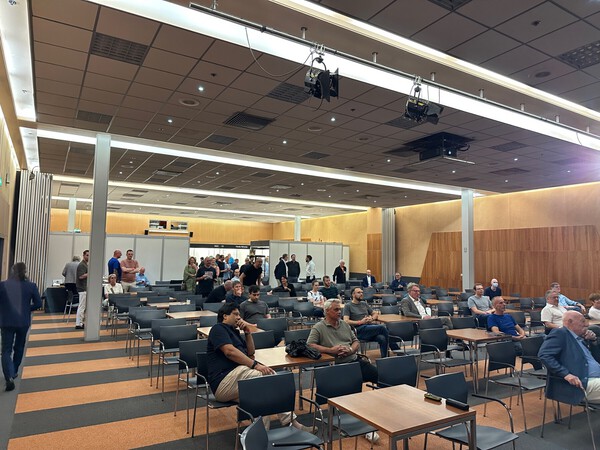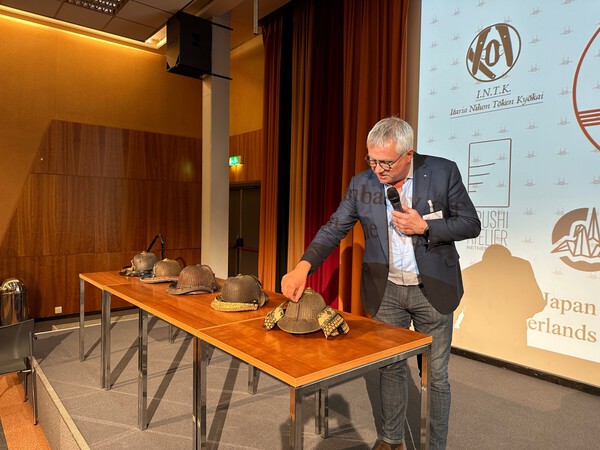-
Posts
1,899 -
Joined
-
Last visited
-
Days Won
20
Content Type
Profiles
Forums
Events
Store
Downloads
Gallery
Everything posted by Gakusee
-
Been like this for a while. Just use a concatenated complex search in your search engine using the term + aoijapan.net
-
Jeff - please spend a bit more time reading to familiarise yourself with the context, the meanings, the methods used by smiths and so on. Please firstly understand the quality implications of custom-ordered swords with particular emphasis on what that meant in terms of quality and performance characteristics, before you make sweeping statements about what it might hypothetically mean merely semantically.
-
Indeed, they were not made for one battle but were simply mass produced swords forged in large numbers and distributed in bundles. M Sesko: kazuuchi-mono (数打ち物) – The changes in the Muromachi period, the insecure times during the warring Sengoku era, and the sword trade with Ming China brought an unprecedented mass production of swords. These mass produced swords became to be called kazuuchi-mono (lit. “made in large numbers”) and the Osafune smiths of Bizen province and the Seki smiths of Mino province were the main producers of such swords. But also Yamato was back then a center of sword mass production. As they were delivered in bundles (taba), they were also referred to as tabagatana (束刀, lit. “bundle swords”) or tabane-mono (束ね物). To distinguish between a mass produced and a elaborately made swords when talking of swords from the Muromachi and Sengoku era, the term chūmon-uchi (注文打ち) was introduced which means lit. “special order sword” or “sword made on order (and not produced ahead for stocks).”Mostly kazuuchi-mono were only briefly signed or not signed at all whereas chūmon-uchi proudly mention the full name of the swordsmith, his place of residence, and the production date on the tang.
-
Congratulations and enjoy them! Often the greatest pleasure is in the journey, not the destination, and appertaining expectation….So please do not rush to get everything immediately done but savour the anticipation
-
You both could join established clubs which have regular Zoom sessions. I know the NBTHK AB organises these online sessions and so do other clubs. It is not ideal but if your objective is to “talk swords”, as you both state above, such sessions should at least go some way. Of course, they are no substitute for physical meetings.
-
Well, have you checked Eddy Wertheim of the Japanese Gallery in Kensington or Pablo Kunz from Unique Japan (who people do not realise is based and lives in the U.K.) and so on? Peter Yorke sadly passed away… There are probably another 5-6 U.K.-based people from whom you can buy papered swords and they operate on a “semi-professional” basis. There are also the various antique dealers who specialise in more than just Asian art eg Peter Finer and his sons and the like. Actually, there are sources (including the auction houses with their biannual Japanese auctions) from where you can buy papered swords in the U.K. . Also, members of the ToKen Society buy and sell from each other too. https://new.uniquejapan.com/home/ japanesegallery.com peterfiner.com NB: I am not endorsing anyone mentioned above and have no relation to these apart from knowing some of them. Caveat emptor and make your own conclusions.
-

Super Samurai Market at Token Matsumoto
Gakusee replied to Keichodo's topic in Swords and Edged Weapons
Paul, this was good, thanks. Clever use of dual cameras and inset video stream. You still need to work on the lighting element for the swords. But otherwise, thank you so much for pioneering this. -
Gary, thanks for posting. We cannot tell much from these photos but it looks like a great sword. Could you photograph the kinsuji and sunagashi which must have given it the attribution together with some nagare? Also the koshirae seems to have lovely byakudan nuri.
-

Yoshimasa Katana with 4 x certificates (Tokubetsu)
Gakusee replied to Jorgensen's topic in Swords and Edged Weapons
Well, Pablo is a professional dealer His catalogues and documenting, as herein, are always very high-quality. -
Why are we seen questions such as is this way past polish / point of no return? The photos are blurry but I cannot see deep rust or disappearing hamon or a very thin blade where there is a danger of kawagane being thinned to have shingane show through. Measuring kasane, motohaba, showing more focused pic of the hamon and kissaki will hep people evaluate the state a bit better.
- 13 replies
-
- katana
- shin-shinto
-
(and 1 more)
Tagged with:
-
Well done, Manuel. Congratulations on this impressive result! I hope to see you again soon, with the rest of the Italian nihontophiles. Keep it up and all the best!
-

Magnificient daisho koshirae!
Gakusee replied to Fuuten's topic in Auctions and Online Sales or Sellers
I will be honest: I like the sea horse menuki most of all in this package but it is a bit like the tail wagging the dog from an interest perspective... Might be rather late-manufacture. The dai ito has some wear to it and greasing from handling while the sho - looks newer. They have different menuki etc so probably retied at a different time..... The was put together at different times with different elements.. Probably the tsuba were replaced at some point away from some more insect themed or marine themed.... However, there are some valuable elements in there and the NBTHK clearly wants to preserve those... That is why they probably papered them. -

Magnificient daisho koshirae!
Gakusee replied to Fuuten's topic in Auctions and Online Sales or Sellers
Axel, well, people's tastes are different. It might have some good elements but it feels put together incongruently, without following a continuous theme or aesthetic. It just appears haphazard: Shoki...oni... tadpoles.... autumnal leaves.....masks..all sorts of clashing metals. -
As far as I know, the Munetsugu daisho is part of Udo's personal collection and was for display only. He has had it for over 20 years and it has some emotional connotations but you could get in touch with him via his website (Honto Nihonto). 'Best' is always subjective. To some, it means the rarest. Others look for it among the top-rated blades (Juyo) and others assume it should be the most expensive. We had another thread on 'best' in here. Best from what perspective? Best as a weapon could have been the two massive Nanbokucho blades..... Best aesthetically - we all have different tastes. Probably on the daisho we should say - the rarest. True daisho, same smith/dating/ same paper/koshirae. I quite liked the Hikobeijo Sukesada and also the tiny Sengo tanto with lovely TH koshirae (Seiyudo).
-
Luc, thanks for helping out with the educational side of the event too. We appreciated it and the small but avid audience of Katchu followers all seemed to enjoy the kabuto kantei. That was a novel approach to education and in general such sessions are valuable to discuss more intricate details of items and examine them in hand - whether it is swords or kodogu or kabuto or amour.
-
From the organisers, I have heard that probably pre-sales and ticket allocations are trending towards 200. Hopefully, there will be some visitors on the day, who have not pre-booked. The reality is that in Europe, we do not have that many options to attend hobby events like the US. The recent Berlin study day was a great success at the Samurai Museum, and around 40-50 people turned up at that NBTHK led event. I hope collectors and students of the samurai arts will turn up. This Utrecht event is more multidisciplinary than just swords. The Utrecht event website has a lot of detail about the armour / sword dealers who will attend as well as the educational programme.
-
I have actually tried ChatGPT with Juyo Zufu for which I have translations and sometimes the results are so far off, it is not even funny. For standard, non-technical subject matters where English resource material is prolific, it does reasonably well. For arcane subjects such as nihonto, in less intuitive languages such as Japanese and Chinese (where different alphabets and characters have different meanings subject to context or time-period usage), then caveat emptor. Be very careful as it mixes myth with fact, pulp fiction with history and blends things up. I made repeated attempts to teach it about Osafune, and within the same discussion thread, it did seem to pick it up somewhat. However, in a new dialogue, the knowledge was gone. It is a very advanced semantic model but that is what it is for now.
-
Fully matched, kamons in place, great kabuto smith, in great state of preservation, koshu tokubetsu kicho paper - what more to wish for Well done

















